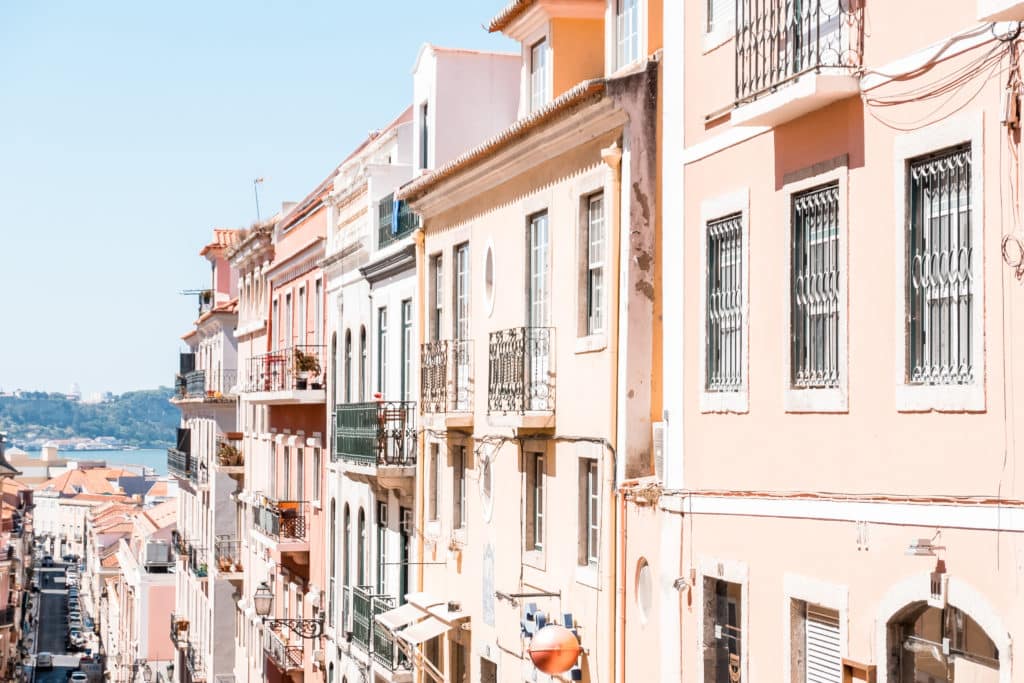
Inspiring Travel Blog Post Ideas
Recently I have been feeling a little bit of writer’s block when it comes to creating new posts for my blog. So I brainstormed some travel blog post ideas and figured I would share them with you here!
Hopefully these travel blog post ideas will help inspire your next post too. 🙂
These travel blog post ideas are great for when you’re stuck at home and aren’t sure what to write about next on your travel blog!
Note: If you haven’t already started your travel blog, be sure to check out my step-by-step guide How to Start a Travel Blog to get everything set up in less than an hour!
Or sign up for my FREE five-day email challenge below to get your blog up and running in five days:
Then keep reading to find out how to start your blog, with step-by-step instructions.
I highly recommend Bluehost for setting up your new blog. They offer WordPress web hosting starting at just $2.95 a month along with a free domain name ($15+ value) and free set-up of your blog.
Not to mention, Bluehost makes is really easy to use if you’re a beginner. Later on, you can graduate to a more powerful hosting provider. I still use Bluehost for my starter sites because it’s cheap and easy.
But I digress… we’re here to talk about ideas for travel blog posts!
50 Travel Blog Post Ideas
- How to pack with just a carry-on suitcase
- Should you check your luggage or carry-on?
- Packing list for a certain destination
- Packing list for a round-the-world trip
- Your travel essentials
- How to survive a long-haul flight
- Tips for booking cheap flights
- Top 10 best beaches in the world
- Top 10 most underrated cities in the world
- How to save money for travel
- How to plan a round-the-world trip
- Top 10 day trips from your city
- Advice for solo travelers
- Advice for traveling with children
- How to plan a vacation on a budget
- Holiday gift guide for travelers
- Travel guide to your city
- Tips for surviving a road trip
- Top 10 destinations off the beaten path
- Top 10 destinations for budget travelers
- Your best travel hacks/travel secrets
- Unexpected travel expenses and how to avoid them
- Best travel credit cards
- Destination travel guide – what to do, where to stay, what to eat, etc.
- Best photo spots in your city
- What to do about cell phone service overseas
- Work abroad job ideas
- Top 10 destinations to visit this winter
- Top 10 destinations to visit this summer
- Travel mistakes to avoid
- What you have learned from travel
- Weekend itinerary to a certain destination
- Favorite travel apps
- Hair/beauty products you pack for travel
- How to stay healthy while traveling
- Top 10 foods you must try in a destination
- Best restaurants in your city
- How to travel as a vegetarian/vegan
- Ways to save money while traveling
- Hotels vs. hostels – which is best?
- Your funniest/most embarrassing travel moments
- Best places to take a road trip
- Tips for booking cheap accommodation
- The best free activities in your city
- Your travel bucket list
- Theme park vacation guide (Disney World, etc.)
- How to plan your first cruise
- Best destinations for families/couples/college students/etc.
- Your favorite books about travel
- Your favorite travel blogs
Happy blogging! Let me know in the comments if you use any of these travel blog post ideas on your own blog – I would love to read them!
Related: How to Write 13 Travel Blog Posts from One Trip
How to Start a Travel Blog
Haven’t started a travel blog yet? Here’s a quick step-by-step guide on how to get started!
These are the exact steps I took to start Wander Her Way. You can follow this tutorial and have your own travel blog up and running in less than one hour!
Step 1: Choose a domain name
The first step to starting a travel blog is choosing a name for it. Your blog name will be the first impression that you have on people, so it’s important to pick a good one!
👉 If you need some help coming up with a name for your blog, be sure to read my guide on how to choose a travel blog name and ideas to inspire you.
Step 2: Get hosting
Once you have chosen a name for your travel blog, you will need to register it and get web hosting.
If you buy your domain name through an outside company, you can expect to pay $15 to $20 a year for it. However, if you sign up for web hosting through Bluehost, you can get your domain name for free.
If you’re just starting out, I highly recommend Bluehost for web hosting. They are the company I and many other bloggers use for starting new blogs and websites. They are easy to use, have some of the cheapest hosting plans out there, have a reliable hosting service, and decent customer support.
Granted, there are more powerful hosting providers out there with more responsive customer service but if you’re just getting started, it’s not worth the investment. Bluehost is enough to get your feet wet in the travel blogging pool. Then, when you begin to make some money, you can upgrade to a hosting company like BigScoots (where Wander Her Way is hosted now).
Bluehost has been generous enough to offer readers of Wander Her Way 70% off their new web hosting plans. So for only $2.95 per month you can get WordPress hosting AND a free domain name!
🩵 Get 70% off WordPress hosting with Bluehost
How to sign-up with Bluehost
Here are the detailed steps to set up web hosting with Bluehost:
1. Click the “Get Started” button
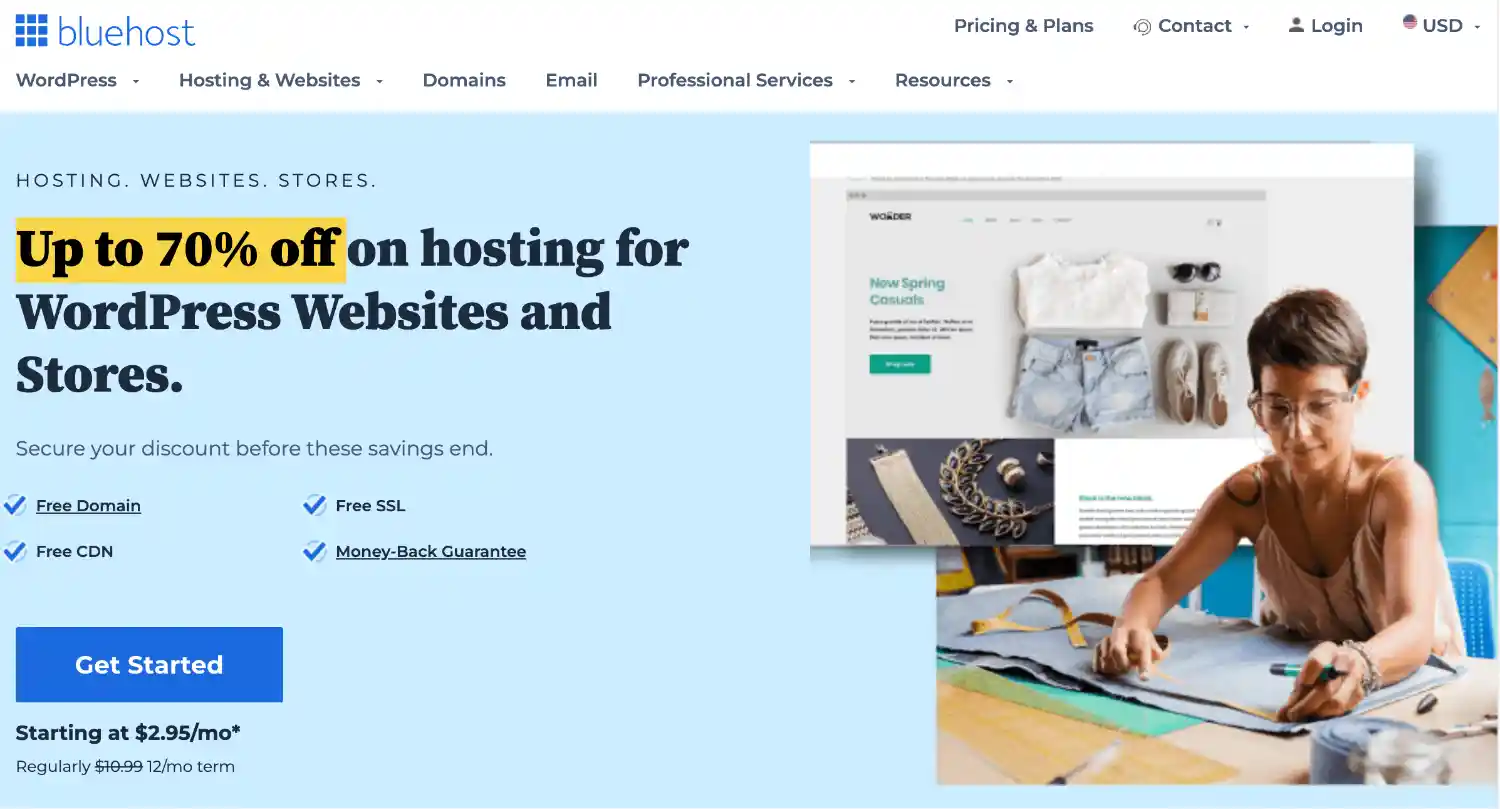
2. Select your hosting plan
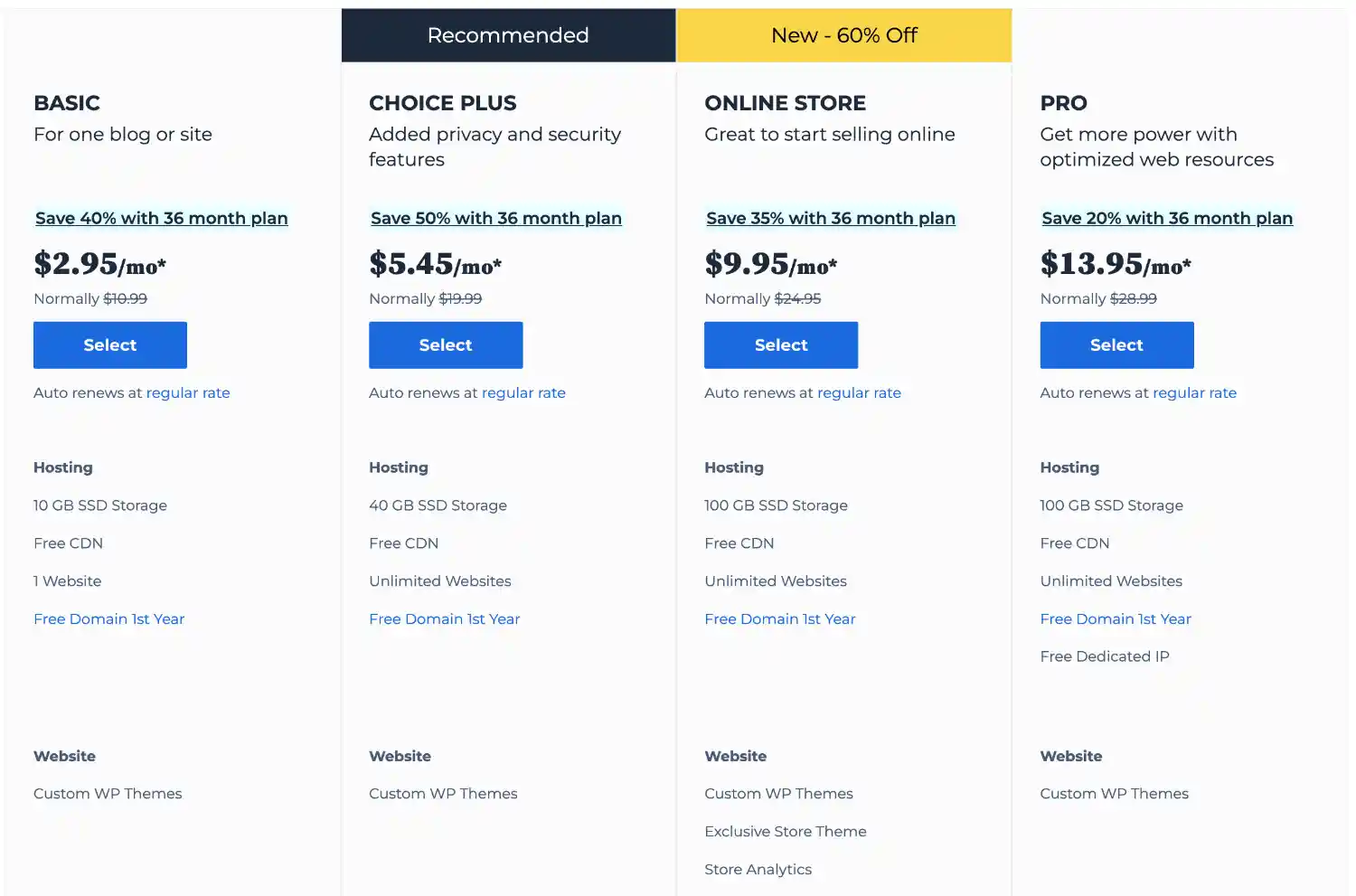
Which plan to choose: I recommend the basic plan for new bloggers.
I’m personally on the plus plan, but that’s only because I run multiple blogs. Otherwise I would probably choose the basic plan!
3. Put in your domain name
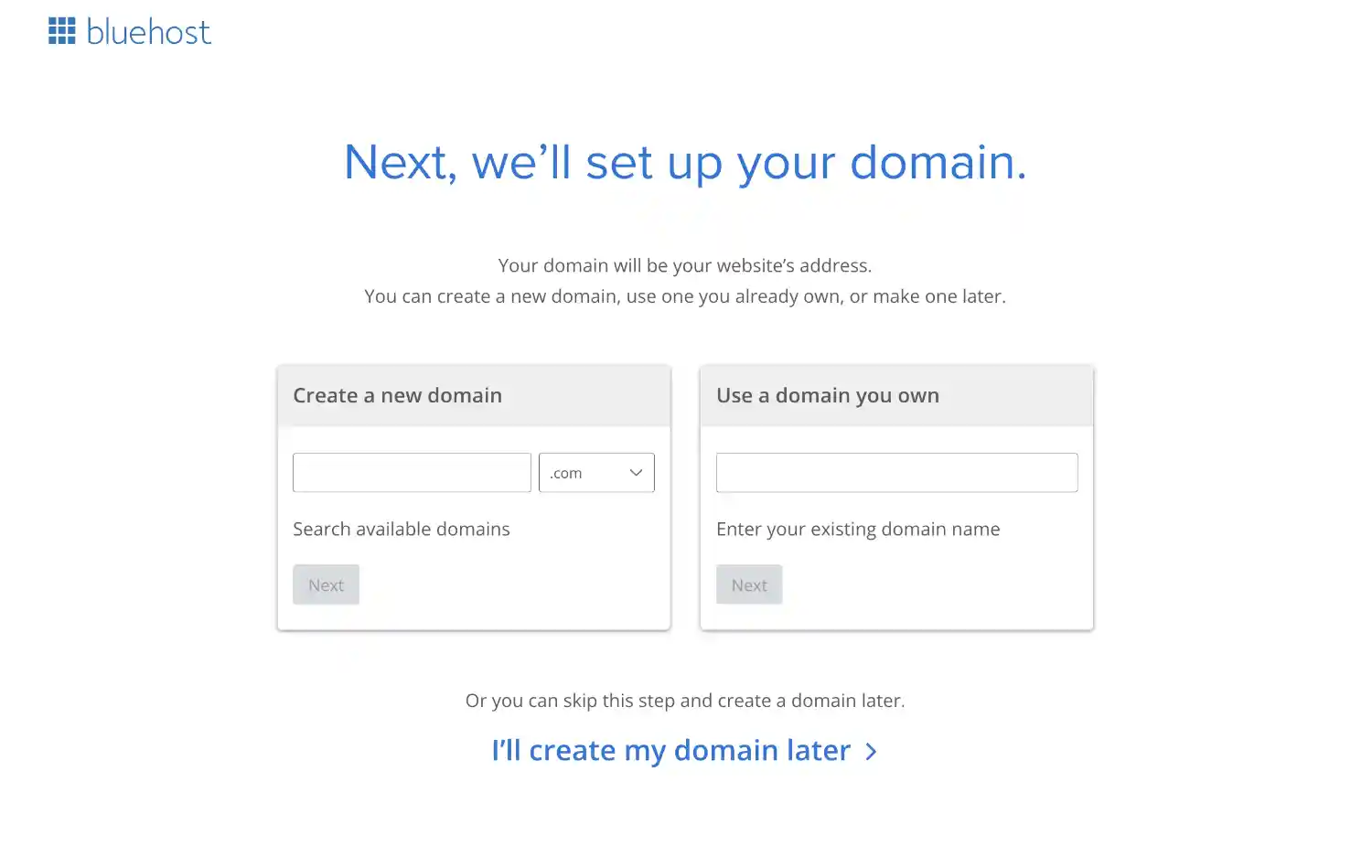
This is where you’ll put in the domain name that you decided on earlier.
What if I haven’t decided on a name yet? If you haven’t decided on a domain name for your travel blog yet, wait a couple minutes and this offer will pop up on your page:
Select this option and you can go ahead and start setting your blog up, then use the free credit to buy your domain name later.
4. Create your account
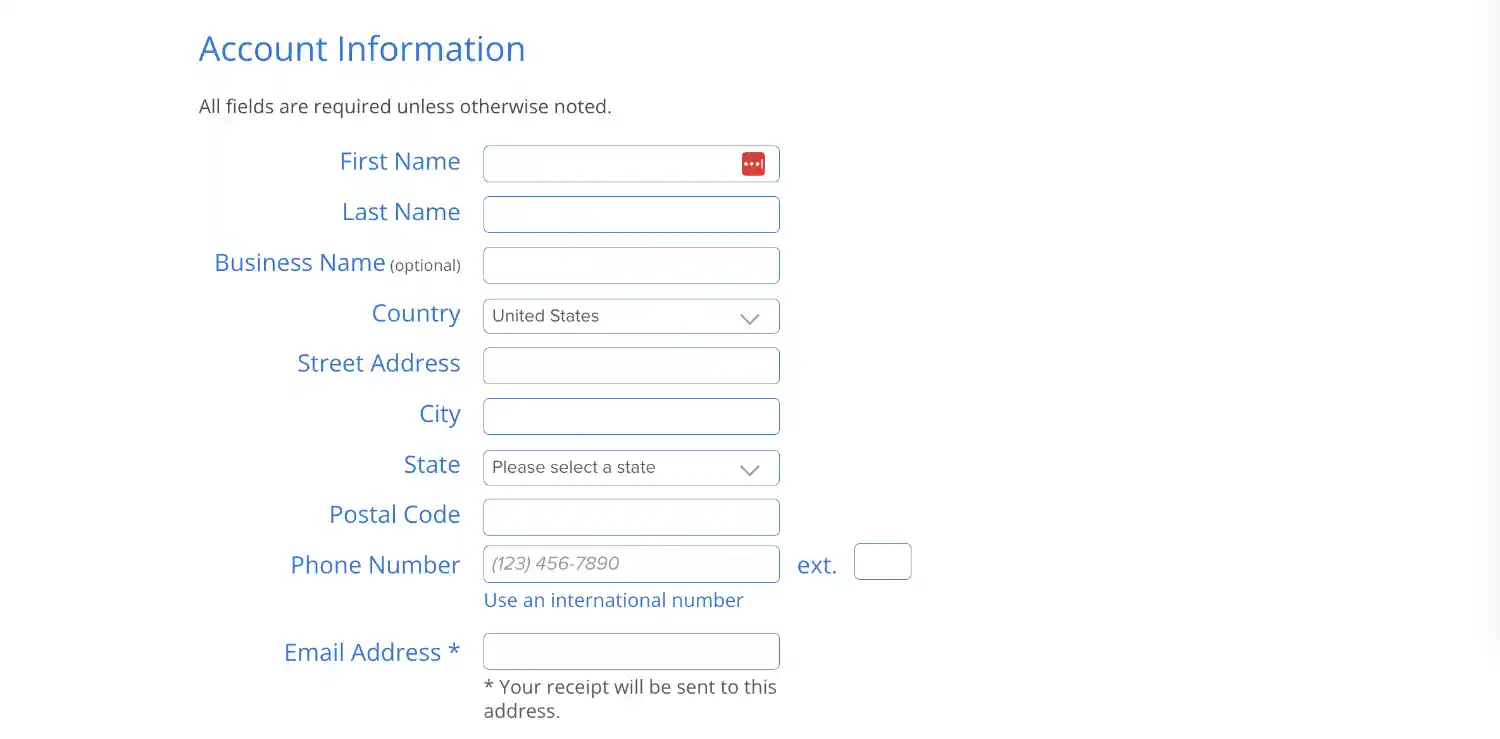
5. Select your package and pay
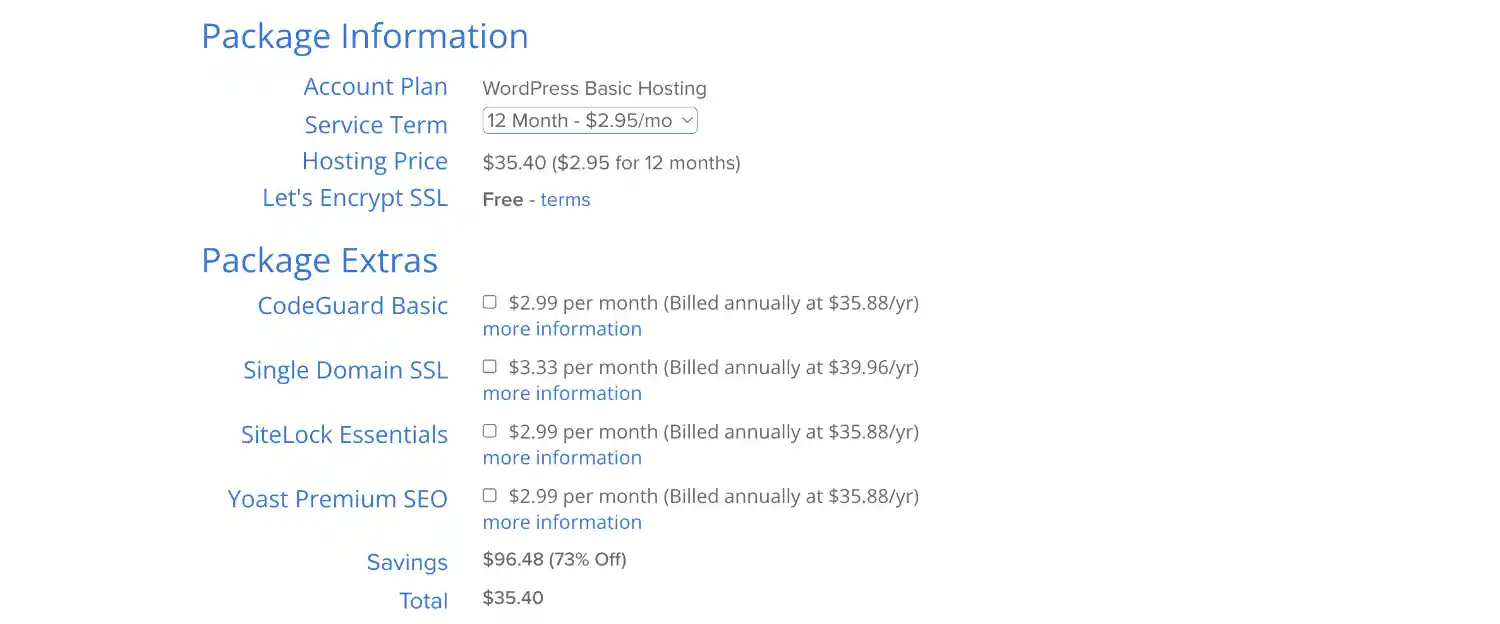
Here’s where you’ll select your hosting plan. The 36-month plan is the best deal at $4.95 a month for the first three years, but to keep your starting cost as low as possible, you can pick the 12-month plan at only $2.95 a month.
What about package extras? You have the options to add on extras like SiteLock and Yost Premium SEO. I personally don’t recommend any of these because there are free WordPress plugins you can install that do the same thing. Which I’ll cover in the next section of this guide.
This is not to say these are not needed, but they are not essential for a new travel blogger at the beginning stages so save your money right now!
6. Congrats, you’re done!
Once you check out, you’ll be redirected to your Bluehost dashboard, which will look something like the image below. Your dashboard is where you can log in to your blog for the first time and start setting everything up.
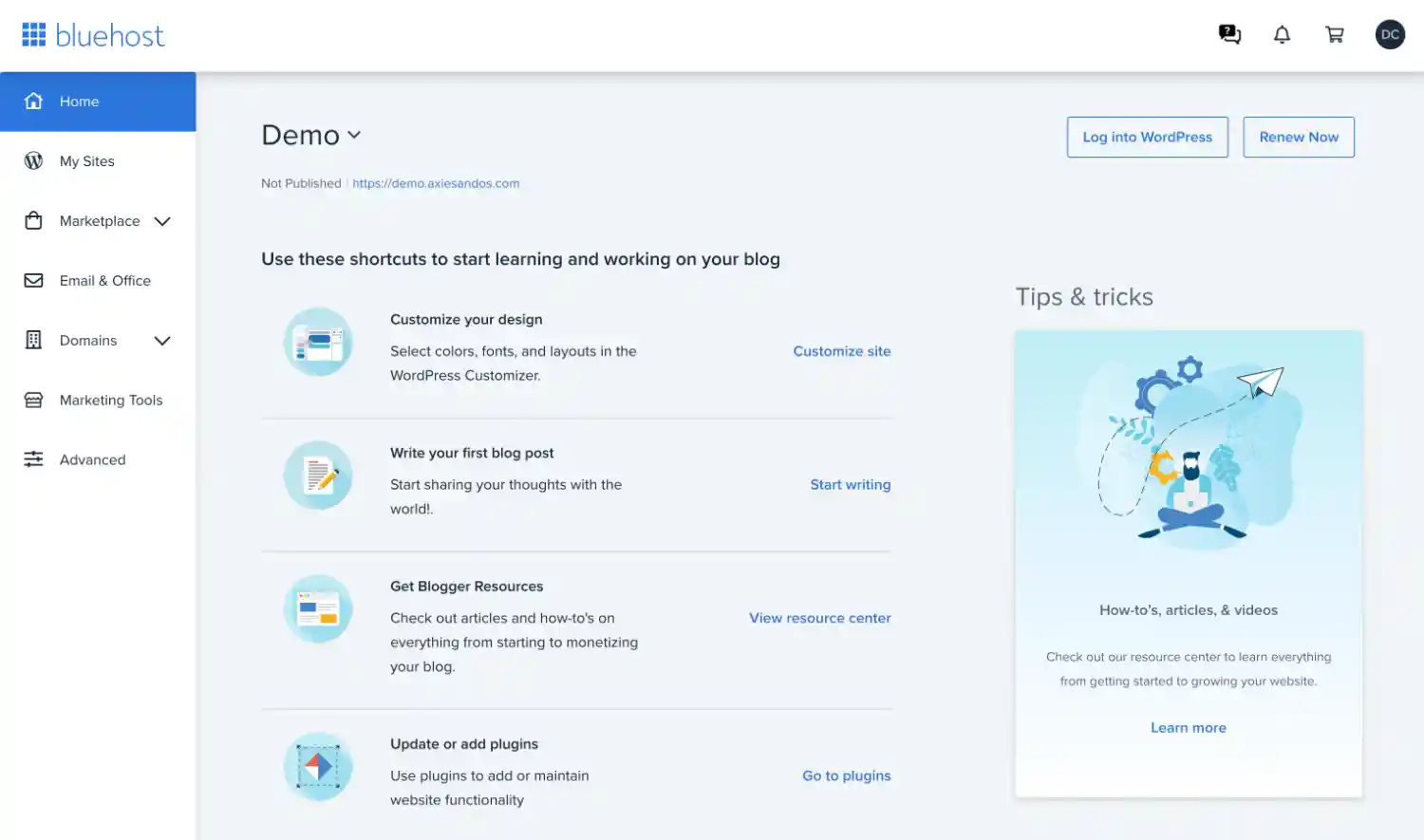
Your blog will be run on the WordPress platform. WordPress is a content management platform, or CMS. This is where you’ll actually write your blog posts, upload your images, and design the look of your website.
Bluehost installs WordPress automatically for you—all you have to do is answer a few questions when you get to your dashboard. And don’t worry, they will walk you through the questions step-by-step and guide you through naming your blog, connecting your domain, and creating your WordPress site for you—it’s very easy!
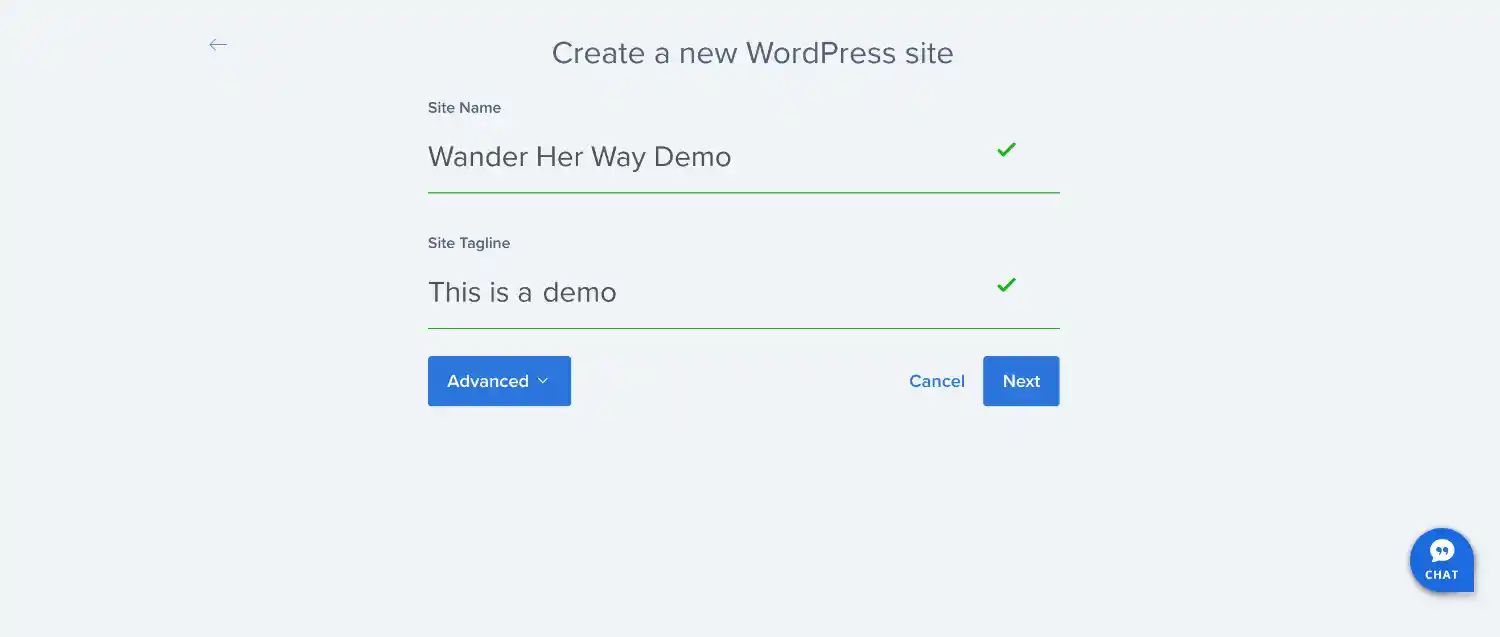
Step 3: Designing your blog
Your blog will come with the default WordPress theme installed. You will definitely want to change this, which means it’s time to pick a theme for your blog!
When it comes to designing your blog, you have a few options. Here are the most common:
- You can hire a web designer.
- You can buy and install a pre-designed child theme.
- You can install a theme that you can customize yourself.
Let’s look at each of these options:
Hire a web designer
This is the most expensive and least recommended route for a beginner blogger and not needed to have a profitable blog.
Buy A Premium Child Theme
A child theme is a theme that has been heavily customized by a designer and packaged in a way that you can install in your WordPress admin panel. A custom child theme comes with fonts, colors, and demo photos and content that you can swap out for your own. So other than changing the aesthetic elements, you’re set to start blogging with the click of a button.
I should mention, however, that fancy design may slow down your website. I wrote a whole piece about my experience switching my WordPress theme and the impact it has on Wander Her Way’s performance.
If having an elaborate design is really important to you, a premium theme is a much better investment for a beginner than a web designer and will make your blog stand out from the crowd just the same.
Customize a Theme Yourself
Finally, you can customize a theme yourself. I recommend installing and customizing a theme on your own because it’s MUCH cheaper, will keep your blog performing great, and it’s not as difficult as you may think.
My favorite theme is Kadence WP, which has a free and a paid version. The free version will be more than enough to get you started with a fast and good-looking blog, which is all you really need. The cool thing about Kadence is that, when combined with the Kadence Blocks plugin (which I’ll discuss in a minute) it eliminates the need for page builders.
Before blocks, Page Builders were the only way to have beautifully designed blogs and websites in WordPress without a professional web developer. The downside as I mentioned, is page builders make your website heavy and slow.
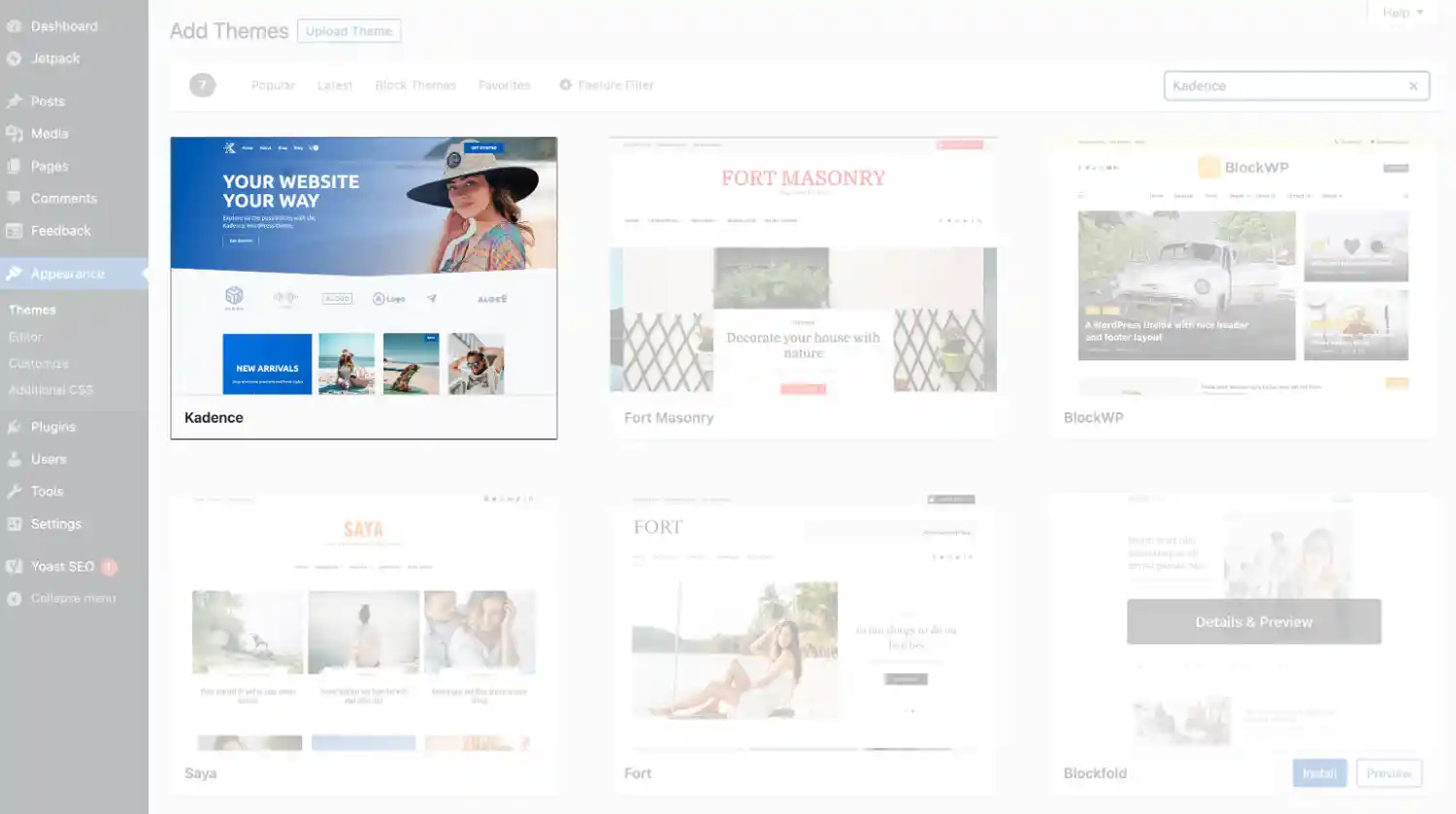
This is why I recommend Kadence to new bloggers. You can install the free version right from your WordPress theme tab, pick one of their starter templates, and start blogging. As your blog grows and you gain some experience, you can do more advanced customization and design changes to it.
👉 If you need help finding the perfect theme, make sure to check out my list of the best WordPress themes for travel blogs.
Step 4: Install plugins
WordPress plugins are applications that add extra functionality to your blog—think of them as apps on your phone.
There are thousands of plugins out there and some can be really useful but don’t go plugin happy! When it comes to plugins, less is better as they can also slow down your website and make it vulnerable to hackers. Most blogs will end up having between 10-15 plugins and you should stick to that number.
Bluehost Default Plugins
Your WordPress site will have a few plugins by default and you can activate them or delete them.
Here’s what you should do:
- The Bluehost Plugin: Activate it. While not required to run your blog, this plugin connects your WordPress to your Bluehost dashboard and gives you the ability to create a staging site. This is basically a working copy of your website that you can make changes to before pushing them live. It’s good practice to do that—in case something breaks, your live website is not affected.
- Akismet: Activate it. This plug-in filters out spam comments and form submissions on your blog. There are other ways of doing that without a plugin but it’s good to have as a beginner. The free version will be enough for you to get started.
- Hello Dolly: Delete it. It has zero functionally. Goodbye.
- Creative Mail: Delete it. This is an email marketing plugin by Bluehost itself. Just get rid of it… If you plan to start collecting emails, I recommend MailerLite, which is free for up to 1,000 subscribers.
- Yoast SEO: Delete. Yoast helps ensure your blog posts are setup in a way that makes it easy for Google and other search engines to find them—that’s what search engine optimization (SEO) is all about. Don’t get me wrong, Yoast SEO is a great friendly plugin but the free version of RankMath SEO is also easy to use and will give you a LOT more features than Yoast.
- Jetpack: Delete it. This plugin is infamously famous for slowing down websites like crazy, which is bad for SEO! I’ll suggest some alternatives.
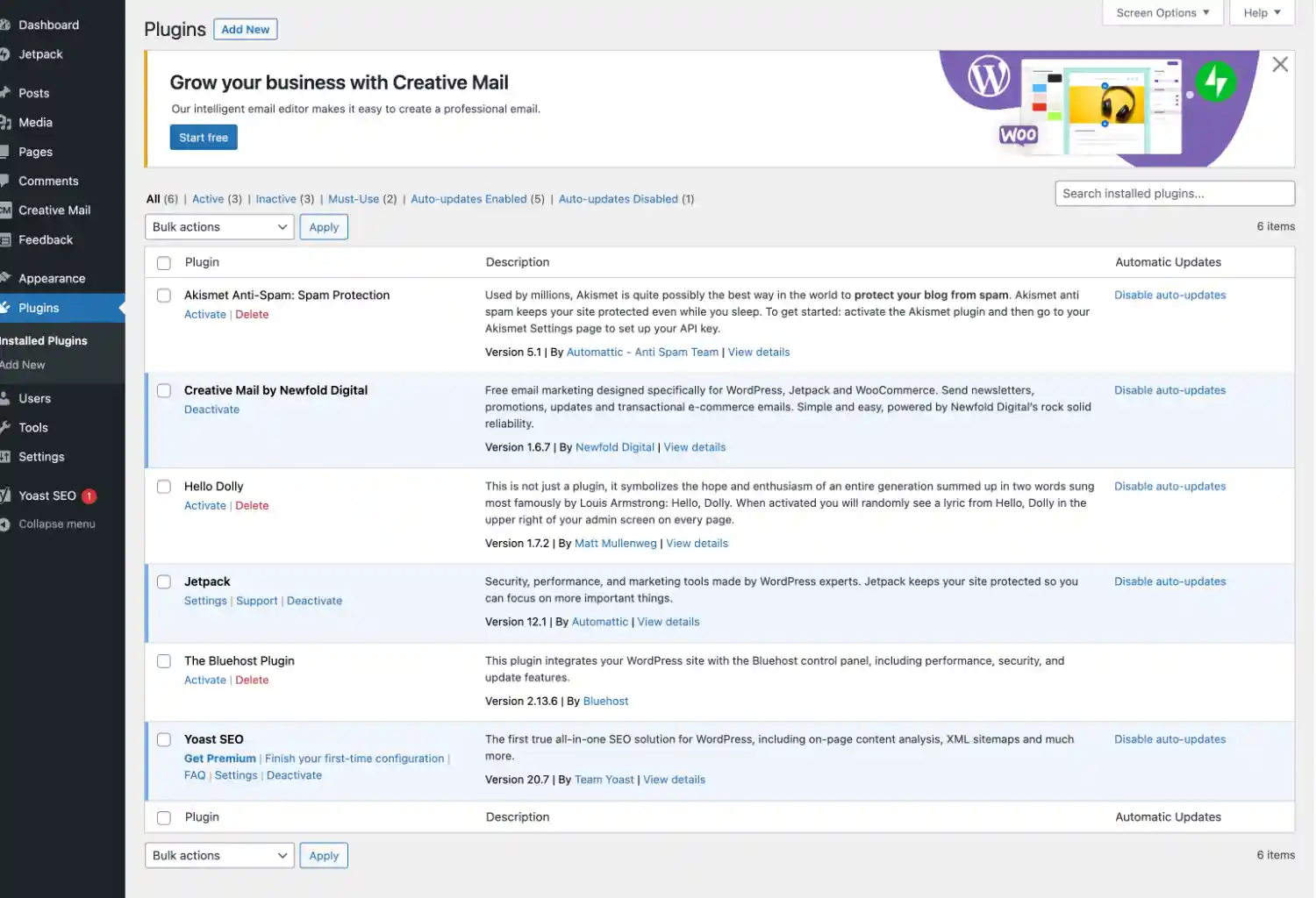
Recommended Plugins for Beginners
Here are the plugins I recommend most for new bloggers are:
- WordFence Security: Great security plug-in to protect your site.
- Sassy Social Share: Adds social media share buttons to your blog posts. And you can customize them is a bunch of different ways.
- Autoptimize: Makes your website faster. Remember, fast loading pages = better SEO.
- UpdraftPlus: This plug-in makes regular backups of your site so you never lose anything!
- RankMath SEO: The free version of RankMath has a lot of features, including many that eliminate the need for additional plugins down the road. While Yoast may appear more user-friendly, RankMath will walk you through the setup step-by-step.
- Kadence Blocks: We talked about themes before and Kadence Blocks is the perfect complement to the Kadence Theme. Similar to RankMath, the added functionality and design options of Kadence Blocks will eliminate the need for other plugins in the future.
All of these plug-ins are 100% free to use. Some have premium versions with advanced features that are paid but you don’t really need any of that when you first start blogging.
Step 5: Start posting!
By now, you should have purchased a domain name and hosting through Bluehost, installed a WordPress theme, and added some functionality to your blog with plugins.
Now all that’s left is to start posting. And that’s where these travel blog post ideas will come in handy if you need some inspiration on what to write about!
Learn How to Make Money with a Travel Blog
If you want to make money with your travel blog, I highly recommend joining Travel Blog Prosperity. It’s a monthly membership for travel bloggers created by one of the top travel bloggers out there—Jessie Festa of Jessie on a Journey.
Normally, the membership is $49/month, but when you sign up using the discount code WANDER9 you will get your first month of Travel Blog Prosperity for just $9. If you don’t like it, you can cancel at anytime.
When you join the membership, you’ll get immediate access to the following:
- 30+ trainings and lessons for bloggers, with new ones added monthly
- Workbooks and checklists to go along with each lesson
- Twice monthly live group coaching calls with Jessie
- Private Member’s Lounge group where you can get your questions answered
- Weekly VIP Opportunities Newsletter with paid opportunities, press trips, and more!
👉 Try a month of Travel Blog Prosperity for only $9 with promo code WANDER9
Other Travel Blogging Tips
This post is part of my ongoing series about travel blogging.
Be sure to check out these blog posts for more travel blogging tips and inspiration!
- Travel Blog Names: How to Choose One + Ideas
- How to Start a Travel Blog for Beginners
- How to Make Money with a Travel Blog
- Best WordPress Themes for Travel Blogs
- Travel Blog Income Report Roundup
Save it to Pinterest:
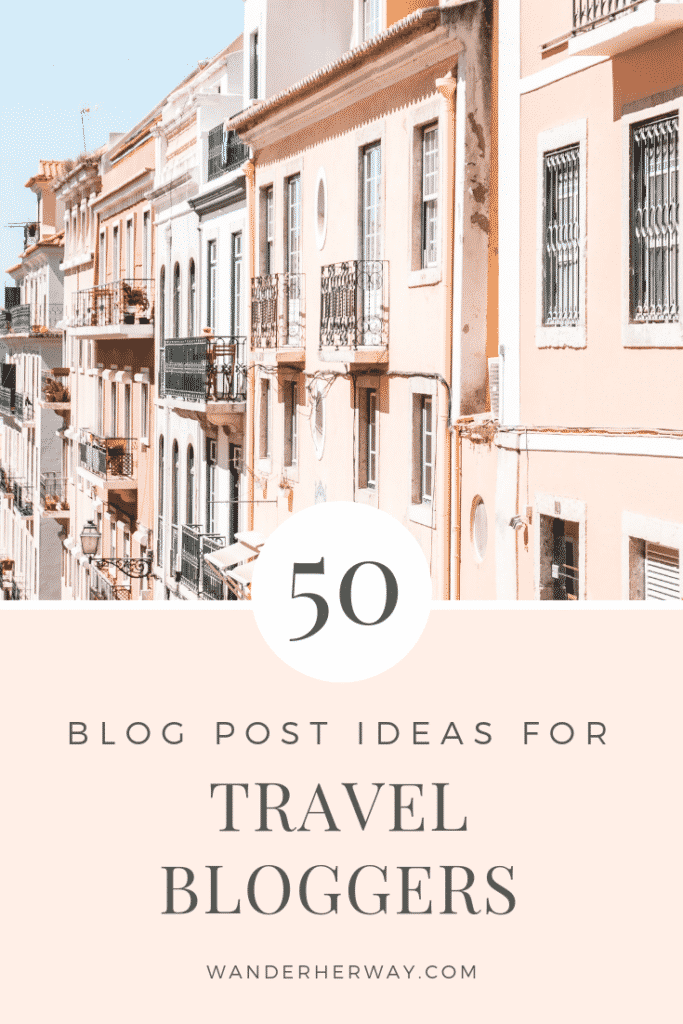
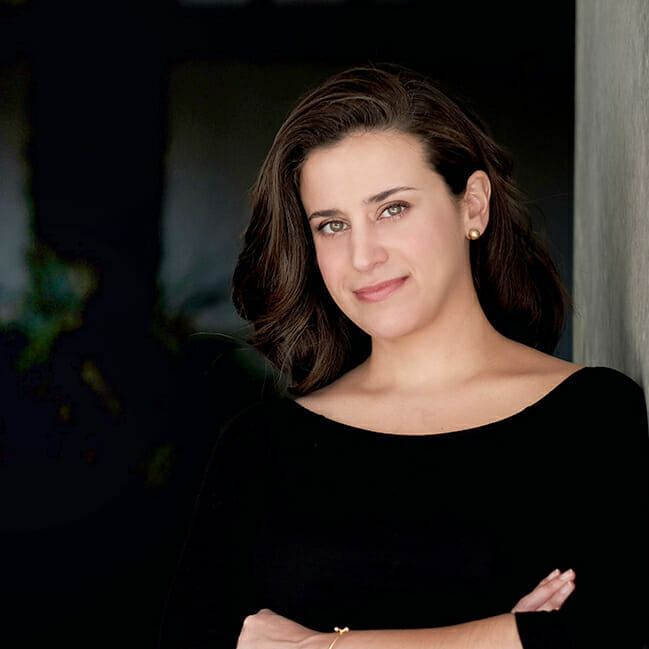
About Denise Cruz
Denise is a marketing executive who escaped corporate to travel the world… twice. A Brazilian native living in the U.S., she’s lived in 4 countries and visited 35+ others. After side-hustling her way to financial independence, she curates solo destination guides, slow travel tips, and travel blogging advice on Wander Her Way. When she’s not on the road, you can find her in Miami with her dog Finnegan.

